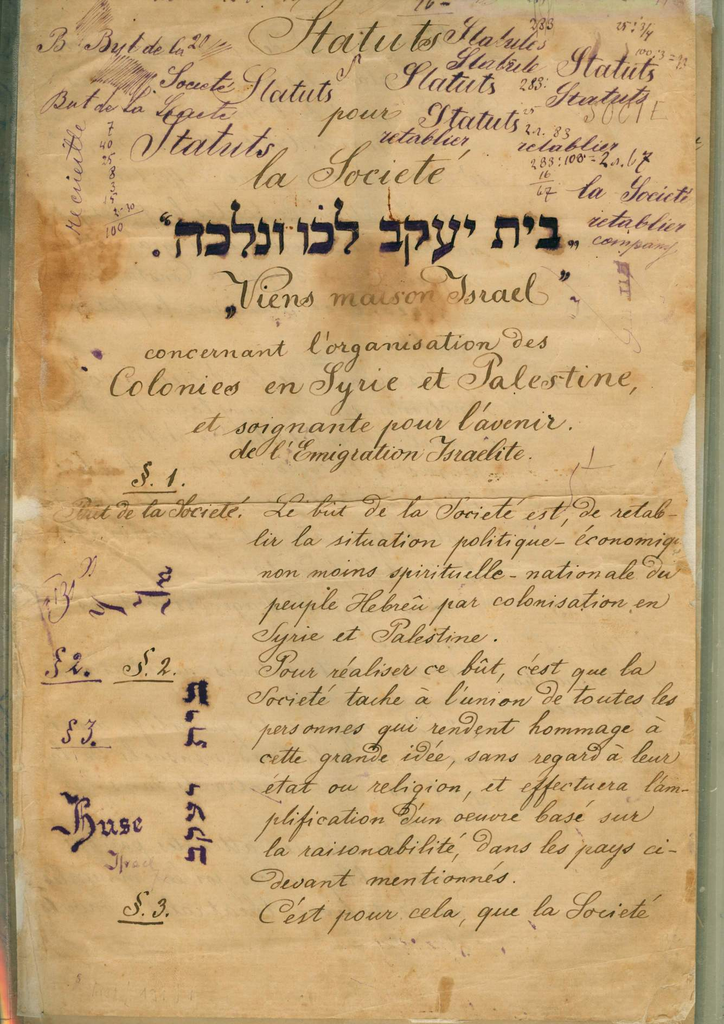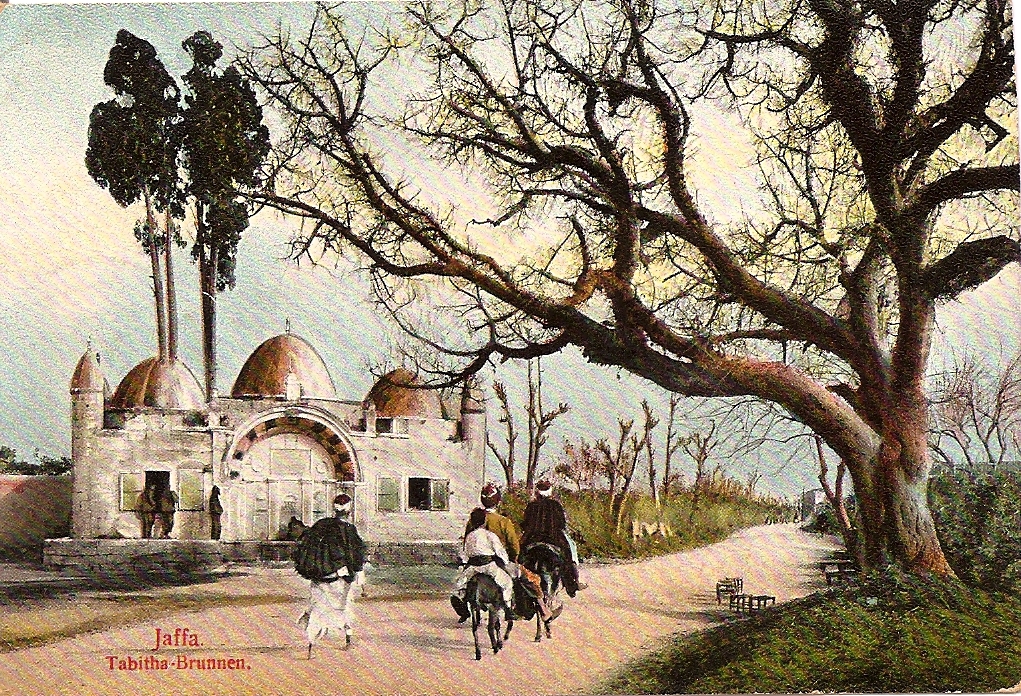|
Abu Kabir
Abu Kabir ( ar, أبو كبير) was a satellite village of Jaffa founded by Egyptians following Ibrahim Pasha's 1832 defeat of Turkish forces in Ottoman era Palestine. During the 1948 Palestine war, it was mostly abandoned and later destroyed. After Israel's establishment in 1948, the area became part of south Tel Aviv. Officially named Giv'at Herzl ( he, גבעת הרצל, lit. Herzl's hill), the name of an adjacent Jewish neighborhood, the name Abu Kabir ( he, אבו כביר) continued to be used. Part or all of Abu Kabir was officially renamed Tabitha by the Tel Aviv municipality in 2011. History Egyptian rule The Egyptian troops of Ibrahim Pasha captured the city of Jaffa and its environs following a battle with the forces of the Ottoman Empire in 1832. Though Egyptian rule over this area continued only until 1840, Egyptian Muslims settled in and around Jaffa, founding the village of ''Sakhanat Abu Kabir'', along with '' Sakhanat al-Muzariyya'', among others. An eastern ... [...More Info...] [...Related Items...] OR: [Wikipedia] [Google] [Baidu] |
Hebrew Bible
The Hebrew Bible or Tanakh (;"Tanach" ''Random House Webster's Unabridged Dictionary''. Hebrew: ''Tānāḵh''), also known in Hebrew as Miqra (; Hebrew: ''Mīqrā''), is the Biblical canon, canonical collection of Hebrew language, Hebrew scriptures, including the Torah, the Nevi'im, and the Ketuvim. Different branches of Judaism and Samaritanism have maintained different versions of the canon, including the 3rd-century Septuagint text used by Second-Temple Judaism, the Syriac language Peshitta, the Samaritan Torah, the Dead Sea Scrolls, and most recently the 10th century medieval Masoretic Text, Masoretic text created by the Masoretes currently used in modern Rabbinic Judaism. The terms "Hebrew Bible" or "Hebrew Canon" are frequently confused with the Masoretic text, however, this is a medieval version and one of several ... [...More Info...] [...Related Items...] OR: [Wikipedia] [Google] [Baidu] |
Intentional Community
An intentional community is a voluntary residential community which is designed to have a high degree of social cohesion and teamwork from the start. The members of an intentional community typically hold a common social, political, religious, or spiritual vision, and typically share responsibilities and property. This way of life is sometimes characterized as an " alternative lifestyle". Intentional communities can be seen as social experiments or communal experiments. The multitude of intentional communities includes collective households, cohousing communities, coliving, ecovillages, monasteries, survivalist retreats, kibbutzim, hutterites, ashrams, and housing cooperatives. History Ashrams are likely the earliest intentional communities founded around 1500 BCE, while Buddhist monasteries appeared around 500 BCE. Pythagoras founded an intellectual vegetarian commune in about 525 BCE in southern Italy. Hundreds of modern intentional communities were formed across ... [...More Info...] [...Related Items...] OR: [Wikipedia] [Google] [Baidu] |
Biluim
Bilu ( he, ביל"ו; also Palestine Pioneers) was a Jewish movement whose goal was the agricultural settlement of the Land of Israel. Its members were known as ''Bilu'im.'' Etymology "Bilu" is an acronym based on a verse from the Book of Isaiah ( 2:5) "" ''Beit Ya'akov Lekhu Venelkha'' ("House of Jacob, let us go p). History The wave of pogroms of 1881–1884 and antisemitic May Laws of 1882 introduced by Tsar Alexander III of Russia prompted mass emigration of Jews from the Russian Empire. On 6 July 1882, the first group of Bilu pioneers arrived in Ottoman Palestine. The group consisted of fourteen university students from Kharkiv led by Israel Belkind, later a prominent writer and historian. After a short stay at the Jewish farming school in Mikveh Israel, they joined Hovevei Zion ("Lovers of Zion") members in establishing Rishon LeZion ("First to Zion"), an agricultural cooperative on land purchased from the Arab village of Ayun Kara. Plagued by water shortages, ill ... [...More Info...] [...Related Items...] OR: [Wikipedia] [Google] [Baidu] |
Mark LeVine
Mark Andrew LeVine is an American historian, musician, writer, and professor. He is a professor of history at the University of California, Irvine. Education LeVine received his B.A. in comparative religion and biblical studies from Hunter College and his M.A. and Ph.D. from New York University's Department of Middle Eastern Studies. He speaks multiple languages including Arabic, Hebrew, Turkish, Persian, Italian, French, German and English.'Politics: Why They Don't Hate Us by Mark LeVine,'London Sunday Times 14 August 2005. Co-edited books *''Twilight of Empire: Responses to Occupation'' co-edited with Viggo Mortensen and Pilar Perez; Perceval Press (2004) *''Religion, Social Practices and Contested Hegemonies: Reconstructing the Public Sphere in Muslim Majority Societies'' co-edited with Armando Salvatore; Palgrave Press (2005) *''Reapproaching the Border: News Perspectives on the Study of Israel and Palestine'' co-edited with Sandra Sufian; Rowman and Littlefield (2007 ... [...More Info...] [...Related Items...] OR: [Wikipedia] [Google] [Baidu] |
Russian Orthodox
Russian Orthodoxy (russian: Русское православие) is the body of several churches within the larger communion of Eastern Orthodox Christianity, whose liturgy is or was traditionally conducted in Church Slavonic language. Most Churches of the Russian Orthodox tradition are part of the Eastern Orthodox Church. Origin Historically, the term "Greek Orthodox" has been used to describe all Eastern Orthodox churches, since the term "Greek" can refer to the heritage of the Byzantine Empire. However, after the fall of Constantinople, the Greek influence decreased. Having lost its Christian '' basileus'' after the Turkish conquest, Constantinople, as a center of power, lost a significant part of its authority. On the other hand, the Moscow rulers soon began to consider themselves real ''Tsars'' (this title was already used by Ivan III), and therefore, according to them, the center of the Eastern Orthodox Church should be located in Moscow, and thus the bishop of Mosco ... [...More Info...] [...Related Items...] OR: [Wikipedia] [Google] [Baidu] |
Necropolis
A necropolis (plural necropolises, necropoles, necropoleis, necropoli) is a large, designed cemetery with elaborate tomb monuments. The name stems from the Ancient Greek ''nekropolis'', literally meaning "city of the dead". The term usually implies a separate burial site at a distance from a city, as opposed to tombs within cities, which were common in various places and periods of history. They are different from grave fields, which did not have structures or markers above the ground. While the word is most commonly used for ancient sites, the name was revived in the early 19th century and applied to planned city cemeteries, such as the Glasgow Necropolis. Necropoli in the ancient world Egypt Ancient Egypt is noted for multiple necropoleis. Ancient Egyptian funerary practices and beliefs about the afterlife led to the construction of several extensive necropoleis to secure and provision the dead in the hereafter. These necropoleis are therefore major archaeological si ... [...More Info...] [...Related Items...] OR: [Wikipedia] [Google] [Baidu] |
Sabil Abu Nabbut
Sabil Abu Nabbut ( ar, سبيل أبو نبوت) also known as Tabitha's Well is a public fountain (" sabil") in Jaffa, Israel, built in 1815/16 CE during the Ottoman period in Palestine.haron Horowitz. ''The Quaternary of ... stone, with some reused limestone blocks incorporated into the masonry, and marble used for decoration.Petersen, 2001, p170/ref> The principal façade of the sabil is its western side, with the fountain contained within a large shallow niche framed with cyma reversa moulding. The fountain is surrounded by four white flat marble columns set against a background of red marble. Above the two central columns is a plaque commemorating the construction of the sabil in 1236 H (1815-1816 CE). On either side of the sabil are windows. These windows were blocked up in about 1960.Kark, 1990, Pl. 19. Cited in Petersen, 2001, p171/ref> There are three-ridged domes that crown the building, as well as the multitude of finials on the domes and the small pinnacles that refine ... [...More Info...] [...Related Items...] OR: [Wikipedia] [Google] [Baidu] |
Palestine Exploration Fund
The Palestine Exploration Fund is a British society based in London. It was founded in 1865, shortly after the completion of the Ordnance Survey of Jerusalem, and is the oldest known organization in the world created specifically for the study of the Levant region, also known as Palestine. Often simply known as the PEF, its initial objective was to carry out surveys of the topography and ethnography of Ottoman Palestine – producing the PEF Survey of Palestine – with a remit that fell somewhere between an expeditionary survey and military intelligence gathering. It had a complex relationship with Corps of Royal Engineers, and its members sent back reports on the need to salvage and modernise the region.Ilan Pappé (2004) A history of modern Palestine: one land, two peoples Cambridge University Press, pp 34-35 History Following the completion of the Ordnance Survey of Jerusalem, the Biblical archaeologists and clergymen who supported the survey financed the creation of t ... [...More Info...] [...Related Items...] OR: [Wikipedia] [Google] [Baidu] |
Hezekiah
Hezekiah (; hbo, , Ḥīzqīyyahū), or Ezekias); grc, Ἐζεκίας 'Ezekías; la, Ezechias; also transliterated as or ; meaning "Yahweh, Yah shall strengthen" (born , sole ruler ), was the son of Ahaz and the 13th king of Kingdom of Judah, Judah according to the Hebrew Bible.Stephen L Harris, Harris, Stephen L., ''Understanding the Bible''. Palo Alto: Mayfield. 1985. "Glossary", pp. 367–432 In the biblical narrative, Hezekiah witnessed the destruction of the northern Kingdom of Israel (Samaria), Kingdom of Israel by Sargon II, Sargon's Assyrians in and was king of Judah during the Assyrian Siege of Jerusalem, siege of Jerusalem by Sennacherib in 701 BCE.Encyclopædia Britannica (2009)Hezekiah Encyclopædia Britannica Online, 12 November 2009. Hezekiah enacted sweeping religious reforms, including a strict mandate for the sole worship of Yahweh and a prohibition on venerating other deities within the First Temple, Temple of Jerusalem. He is considered a very righteous ... [...More Info...] [...Related Items...] OR: [Wikipedia] [Google] [Baidu] |
Menorah (Temple)
The menorah (; he, מְנוֹרָה ''mənōrā'', ) is a seven-branched candelabrum that is described in the Hebrew Bible as having been used in the Tabernacle and in the Temple in Jerusalem. Since antiquity, it has served as a symbol of the Jewish people and Judaism in both the Land of Israel and the Diaspora; it is depicted on the Israeli national emblem. According to the Hebrew Bible, the menorah was made out of pure gold, and the only source of fuel that was allowed to be used to light the lamps was fresh olive oil. Biblical tradition holds that Solomon's Temple was home to ten menorahs, which were later plundered by the Babylonians; the Second Jewish Temple is also said to have been home to a menorah. Following the Roman besiegement of Jerusalem in 70 CE, the menorah was taken to Rome; the Arch of Titus, which still stands today, famously depicts the menorah being carried away by the triumphant Romans along with other spoils of the destroyed Second Jewish Temple. Tr ... [...More Info...] [...Related Items...] OR: [Wikipedia] [Google] [Baidu] |







